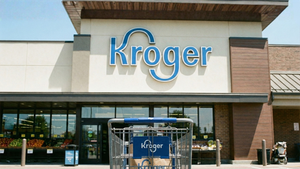
The American housing market finds itself in an unprecedented state of tension, where persistently high home prices collide with elevated interest rates and a stubborn lack of inventory. This potent combination has ignited a severe affordability crisis, making the dream of homeownership increasingly elusive for millions and casting a long shadow over the broader economic landscape. For aspiring buyers, particularly first-timers and middle-income families, the immediate implications are stark: significantly higher monthly payments, prolonged waiting periods, and a forced re-evaluation of their housing aspirations.
This crisis is not merely a temporary market fluctuation; it represents a fundamental recalibration of housing accessibility. It underscores a widening chasm between what homes cost and what average households can genuinely afford, threatening to reshape demographic trends and deepen wealth inequality across the nation.
A Perfect Storm: High Prices, Scarce Supply, and Costly Borrowing
The current housing affordability crisis is a culmination of several powerful forces, converging to create a formidable barrier to entry for many. Nationwide, home values have surged dramatically, increasing by a staggering 45.3% since February 2020 and 60% since 2019. The median existing single-family home price reached a new high of $435,300 in June 2025. This relentless escalation has propelled the home price-to-income ratio to an alarming 12.7 in 2024, far exceeding the historically affordable ratio of 3 and surpassing the peak of the 2007 housing bubble.
Compounding this price surge are mortgage rates that have more than doubled since June 2021, climbing from 2.99% to 6.82% by June 2025. While rates have seen some recent fluctuations, they have largely hovered around 7% since late 2024 and are expected to remain above 6% throughout 2025. This means that a mere one percentage point increase in rates can add hundreds of dollars to a monthly payment, drastically eroding purchasing power. For instance, a 3.1% difference in interest rates (e.g., from 3.5% to 6.6%) adds an estimated $580 per month on a $300,000 loan.
The situation is further exacerbated by a persistent housing shortage, estimated at four million homes nationally. A significant factor contributing to this scarcity is the "lock-in effect," where nearly 70% of existing homeowners secured much lower interest rates (below 4-5%) before the recent hikes. This creates a powerful disincentive to sell, as doing so would mean forfeiting advantageous financing and taking on a new, much higher mortgage. While for-sale inventory has seen an encouraging increase of nearly 20% year-over-year by March 2025, it still falls considerably short of pre-pandemic levels, maintaining a tight market that favors sellers. Wage growth, despite some recent gains, has largely failed to keep pace with these escalating housing costs, widening the gap between income and home prices and leaving a substantial portion of the population behind.
The Shifting Sands: Who Wins and Who Loses
In this turbulent housing market, the landscape of winners and losers is clearly defined, with different stakeholders experiencing vastly divergent fortunes.
Among the "winners" are all-cash buyers, who are largely immune to the bite of high interest rates. Their ability to make quick, unconditional offers often gives them a significant competitive edge over buyers reliant on mortgages. While even cash buyers consider opportunity costs, their transactional flexibility remains a distinct advantage. Institutional investors also find themselves in a strong position, leveraging substantial capital to acquire properties, often for conversion into rental units. These entities, frequently backed by private equity funds, can make all-cash offers and close rapidly, outcompeting many individual homebuyers and further reducing the supply of entry-level homes for sale.
Rental property owners are another beneficiary of the crisis. As homeownership becomes increasingly out of reach, more individuals are compelled to remain in the rental market, driving up demand and consequently, rental prices. For owners, particularly those with fixed-rate mortgages, rising rents translate into increased cash flow and improved net operating income. Lastly, existing homeowners with low mortgage rates are significant winners. They benefit from appreciating property values, bolstering their home equity, all while enjoying substantially lower monthly payments than current market rates. This "lock-in" effect, while contributing to the inventory shortage, secures their financial position.
Conversely, the "losers" are numerous and severely impacted. First-time homebuyers and low-to-middle-income households bear the brunt of the crisis, as the combination of high prices and elevated interest rates makes monthly mortgage payments prohibitively expensive. Even with potential future rate cuts, homeownership is expected to remain a distant dream for many, forcing them into a strained rental market. Homebuilders such as Lennar Corporation (NYSE: LEN) and D.R. Horton, Inc. (NYSE: DHI), while positioned to benefit from limited existing home inventory, face significant challenges. High mortgage rates dampen buyer demand, leading to slower sales and increased reliance on incentives like mortgage-rate buydowns and price cuts, which erode profit margins. D.R. Horton, for instance, saw a 15% year-over-year decline in net sales orders in Q2 2025.
Real estate brokerages like Zillow Group, Inc. (NASDAQ: Z) and Redfin Corporation (NASDAQ: RDFN) are also struggling. A slowdown in housing market activity due to limited inventory and high interest rates directly impacts their revenue streams, leading to fewer transactions and, in Redfin's case, layoffs. Finally, homeowners looking to move or upgrade are also negatively affected. While their existing equity may be high, the prospect of selling their current home with a low interest rate only to buy another at a much higher rate creates a significant financial disincentive, essentially freezing mobility in the market.
Broad Implications: Shifting Sands and Policy Imperatives
The housing affordability crisis extends far beyond individual households, casting a wide net of implications across various industries and demanding a re-evaluation of existing policies. This crisis is accelerating a broader industry trend towards a stronger rental market and the proliferation of build-to-rent (BTR) models. As homeownership becomes less attainable, the demand for high-quality rental housing grows, making BTR developments a lucrative and increasingly popular investment. This shift represents a fundamental transformation in the real estate sector, moving away from a historically homeowner-centric model.
The ripple effects are felt acutely in related industries. A slowdown in home sales directly translates to falling sales for furniture and appliance manufacturers, as fewer new homeowners are outfitting new residences. The construction industry grapples with rising costs of materials (lumber, concrete, steel) and a shortage of skilled labor, which further impedes the development of much-needed new housing. The housing shortage itself leads to lost economic activity, as the homebuilding sector typically contributes 3% to 5% of the Gross Domestic Product (GDP). Moreover, essential service providers, like home-based childcare providers, face severe housing insecurity due to low wages and high living costs, threatening critical community services.
From a regulatory and policy standpoint, governments at all levels are under pressure to intervene. Restrictive zoning and land use ordinances, which limit housing supply and density, are increasingly under scrutiny. Reforms aimed at permitting increased-density housing and streamlining permitting processes are crucial. Tax incentives and subsidies, such as the Low-Income Housing Tax Credit (LIHTC), are being explored and expanded to promote affordable housing development. Some jurisdictions are considering rent control and tenant protection measures, though these must be carefully balanced to avoid deterring new housing investment. The crisis also highlights the urgent need for increased investment in public and subsidized housing and fosters public-private partnerships to leverage resources for affordable housing initiatives.
Historically, the current crisis has echoes of past housing challenges. While different in origin from the 2008 financial crisis (which saw a market crash and declining real home prices), today's affordability levels surpass those of the 2000s housing bubble. The long-term trend reveals that housing costs have risen much faster than wages since 1960, and the U.S. has underbuilt housing by millions of homes over the past 15 years. This suggests a systemic, deeply rooted problem that has been decades in the making.
The Path Forward: Adaptations and Evolving Scenarios
Navigating the housing affordability crisis in the coming years will demand adaptability from all market participants, with both short-term adjustments and long-term strategic pivots. In the immediate future (late 2025 to early 2026), mortgage rates are expected to remain elevated, hovering in the mid-6% range, sustaining pressure on affordability. While a gradual easing towards the low-6% or even high-5% range by late 2026 or 2027 is plausible, a return to the ultra-low rates of the past is highly unlikely. Inventory shortages are also expected to persist in the short term, potentially pushing prices higher as demand continues to outpace supply, despite some modest increases in new construction.
Demographic shifts will significantly influence these trends. The aging Baby Boomer generation, looking to downsize or "age in place," will continue to impact supply. Meanwhile, the massive Millennial and Gen Z cohorts are entering the housing market, driving demand, especially for urban living, proximity to amenities, and multifamily housing options.
For buyers, strategic pivots include being patient and financially ready, exploring new developments or properties requiring renovation, and focusing on growing suburban areas that may offer better value. Innovative financing solutions, such as shared equity programs, lease-to-own arrangements, microloan programs, and government-backed FHA and VA loans, will become increasingly vital. Sellers may need to adopt realistic pricing and offer incentives, akin to new-home builders, to attract buyers in a more competitive market. Capitalizing on the growing demand for sustainable and energy-efficient homes also presents an opportunity.
For industry players, particularly developers and lenders, innovative financing solutions are critical. This includes debt-focused funds for affordable housing, equity-focused funds, bridge/catalytic funds for early development stages, and the expansion of Community Land Trusts (CLTs) to preserve long-term affordability. New construction approaches, notably modular housing, offer a promising path forward. Modular construction can reduce costs by 20% or more and speed up production by 20-40%, addressing both affordability and supply challenges, particularly for Accessory Dwelling Units (ADUs) and multifamily developments.
Policy changes are paramount. Zoning reform to permit more diverse housing types and densities, increased funding and subsidies for affordable housing, expedited permitting processes, and incentives for private capital are all essential. The market will likely see continued strong rental market performance, with modest rent growth, creating opportunities for investment in rental properties. However, persistent affordability issues, supply shortages, rising construction costs, and regulatory hurdles will remain significant challenges. Over the next five years, the market is likely to undergo a balancing act, with moderate price growth, gradual inventory improvement, and mortgage rates remaining elevated but potentially declining, eventually shifting towards a more balanced market around 2027 or 2028.
A Defining Challenge: The Enduring Impact of Unaffordability
The housing affordability crisis is undeniably a defining challenge of our time, leaving a profound and lasting impact on individuals, communities, and the nation's economic fabric. The core takeaway is a severe and persistent housing shortage, exacerbated by years of underbuilding and robust demand, which has driven home prices and rents to unsustainable levels relative to income. This imbalance has pushed median home prices to five times the median household income, making homeownership a distant dream for many and forcing a significant portion of the population to spend well over a third of their income on housing—a clear indicator of severe cost burden.
Moving forward, the market is poised for a period of gradual stabilization rather than a dramatic crash. Mortgage rates are expected to temper slightly, and inventory may see modest increases, but a return to past affordability levels appears unlikely in the near future. The market will continue to be influenced by a complex interplay of interest rate trajectories, the pace of new construction, and evolving demographic needs. This crisis is not just an economic phenomenon; it's a societal issue that threatens the dream of homeownership for an entire generation, contributes to rising homelessness, strains family budgets, and limits access to essential services. It underscores systemic issues related to zoning, construction costs, and labor shortages that demand comprehensive, structural reforms.
For investors, the coming months require a nuanced approach. While the supply-demand imbalance may present opportunities, a focus solely on short-term profit extraction, particularly by converting affordable units to higher-priced rentals, exacerbates the crisis. Investors should watch for potential policy shifts, such as increased regulation on institutional ownership or incentives for building affordable homes, and consider investments in affordable housing development that offer sustainable returns with a social impact.
Homebuyers must adjust expectations, recognizing that significant price declines or a return to ultra-low mortgage rates are improbable. Diligent long-term financial planning, exploring pared-down housing options like townhomes or modular homes, and leveraging creative financing and assistance programs will be crucial. Engaging with experienced local real estate agents who understand market nuances is highly advisable.
Policymakers face the most critical task. A multi-pronged, comprehensive approach is imperative, focusing on increasing housing supply through zoning reforms, streamlining permitting processes, and reducing construction barriers. Expanding financial incentives and subsidies for affordable housing, bolstering rental assistance programs, and implementing market regulations to ensure fair practices are all vital. Investing in infrastructure and workforce development to support new construction and addressing the root causes of skilled labor shortages will also be key. The housing affordability crisis is a critical challenge that demands sustained attention and collaborative efforts. Failure to address it will continue to undermine economic stability, exacerbate social inequalities, and diminish the quality of life for millions of Americans, making a collective commitment to prioritize housing as a fundamental human need absolutely essential.






